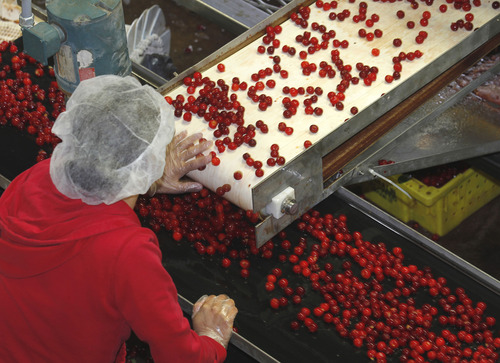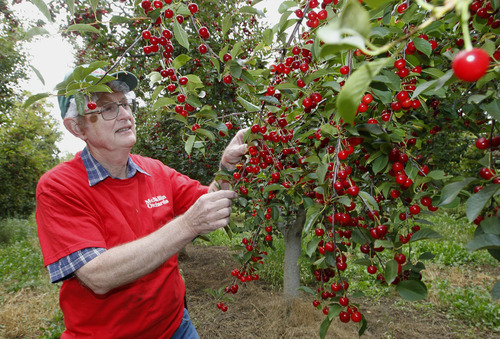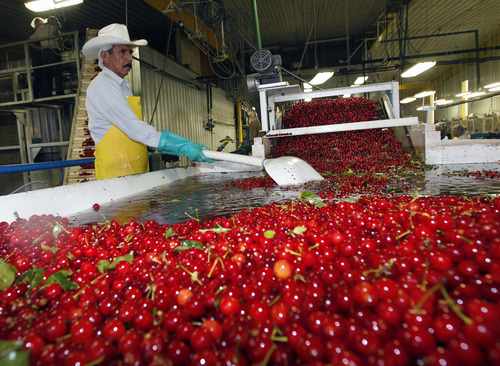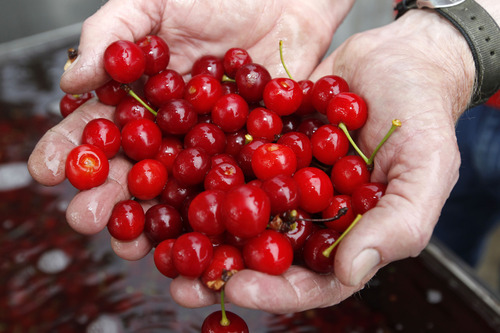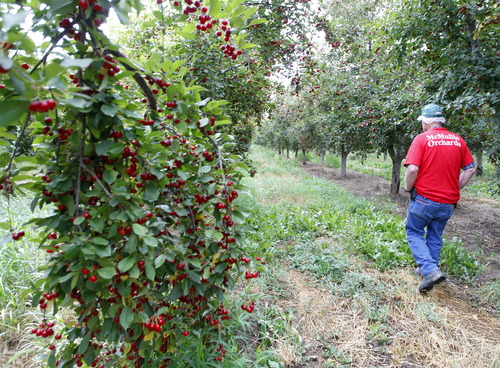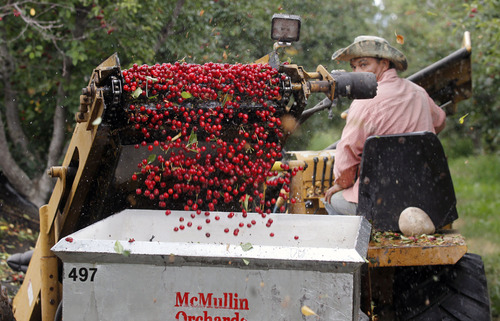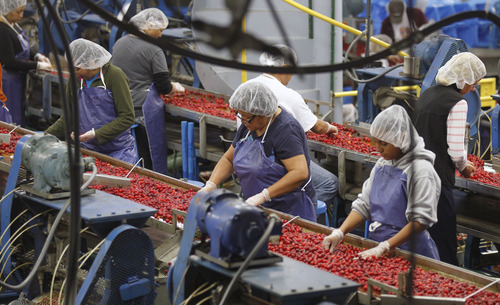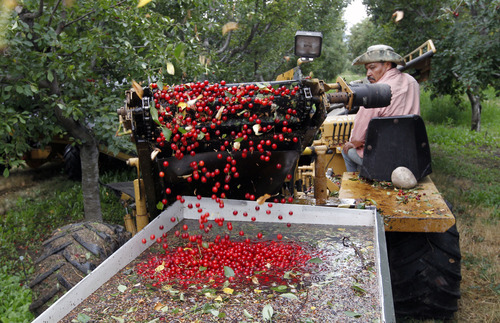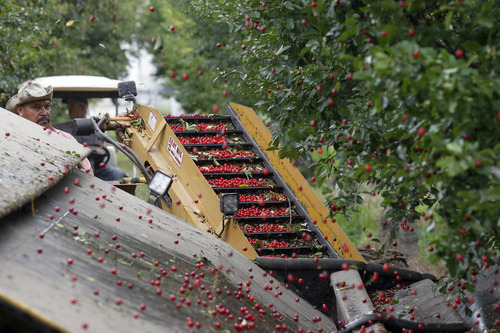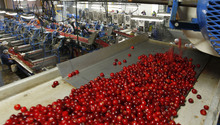This is an archived article that was published on sltrib.com in 2013, and information in the article may be outdated. It is provided only for personal research purposes and may not be reprinted.
The 2013 growing season has been a bumpy ride so far for Utah farmers and ranchers, with the combined forces of nature and man serving up a series of hurdles that are often beyond their control.
But some say it's just another day in the life of the small percentage of people who are still devoted to working the land.
"Farmers and ranchers try to plan ahead," said Arthur Douglas, executive director of Utah's Farm Service Agency. "But we have to take one day at a time because we don't know what cards Mother Nature will deal us."However, Douglas knows one thing for certain this year.
"Lack of water throughout the state is the No. 1 concern," Douglas said.
According to the Utah Climate Center, statewide June temperatures were substantially higher than normal. And precipitation fizzled in June, registering well below seasonal norms.
The entire state now hovers between abnormally dry and moderate drought conditions.
Harvest of Utah's tart cherries has just begun and Douglas predicted that this year's yield will be 20 to 30 percent below normal. Peaches and apples also fall in that category.
And the state's sweet cherry and apricot crops, which come on earlier in the summer, produced only half the usual harvest due to late spring frosts in Box Elder County.
Consumers may see a slight hike in price, Douglas said, as is typical whenever supplies of an item run short.
Frosts in early May, coupled with June's heat and lack of precipitation also impacted northern Utah's grain production, with harvested barley and wheat coming up "empty-headed."
"The heads are there, but there are no kernels," Douglas said, meaning that during an important part of the growing season, the flower was killed.
"Frost hits grain and it's hard to understand the impact until you harvest," Douglas said, estimating up to 60 percent losses on wheat and barley yields.For a century now, Douglas' family has operated a 4,000-acre farm and ranch west of Tremonton and Howell in Box Elder County.
"It gets in your blood," he said.
Size and diversification has sustained the 1,000-acre McMullin Orchards in Payson over the years.
"My dad always counseled us not to put all our eggs in one basket," said third-generation farmer Robert McMullin.
While their sweet cherry crop fell half-short due to frost and poor pollination, tart cherries are expected to come in around 75 percent of normal, McMullin said. Peach and apple harvest comes next and appears to be abundant and tasty.
"If the tarts and sweets don't come through, my dad always said the peaches would help pay the mortgage," McMullin said.
His grandfather and father also were keenly aware that they were farming in a desert so they tapped several water sources.
"We're getting 100 percent delivery from Strawberry Reservoir, which was 75 percent full this year," McMullin said, noting that they also have wells and water rights in Utah Lake if needed.
However, McMullin acknowledged that uncertainty about health care and other federal policies can sometimes keep him up at night.
"Immigration reform is really our No. 1 concern," McMullin said. "I'm harvesting handpicked tart cherries and can only get 10 pickers right now."
McMullin also operates a processing plant where the tart cherries are graded, pitted and packaged in four-gallon pails that get frozen and then shipped off to pie manufacturers.
"I'm using 250 people in my plant running two shifts," McMullin said, and labor looms as his top challenge. He recalled one worker showing up at 7:30 a.m. and abandoning the job by noon.
"A lot of it is that many people are not willing to do the work," McMullin said.
According to Joel Gentillon, survey coordinator for the National Agricultural Statistics Service, his agency's annual fruit survey was suspended this year due to the federal government's across-the-board budget cuts known as sequestration.
"Without the survey, we're not able to anticipate the supply of fruit from Utah," Gentillon said.
In September, he will compile yield estimates from this year's harvests and expects them to be down due to drought. With livestock and irrigation water running short, Gentillon hopes for more rain and a better snowpack this winter.
"That would be absolutely essential for us to have a good season next year," Gentillon said.
David Day's family has farmed their 200-plus acres in west Layton "forever," he said.
"We're only getting 60 to 70 percent of our normal allotment of irrigation water," Day said of the vital fluid that the family's old Davis-Weber canal water shares provide.
That shortage caused early sweet corn crops to come in about 30 percent low, a harvest loss he said "you don't get paid for."
"But that's farming. It's either too hot, too cold or too wet — I'm not complaining," Day said. "My biggest worry is next year. ... If we don't have an above-average winter there won't be enough water."
cmckitrick@sltrib.comtwitter: @catmck



